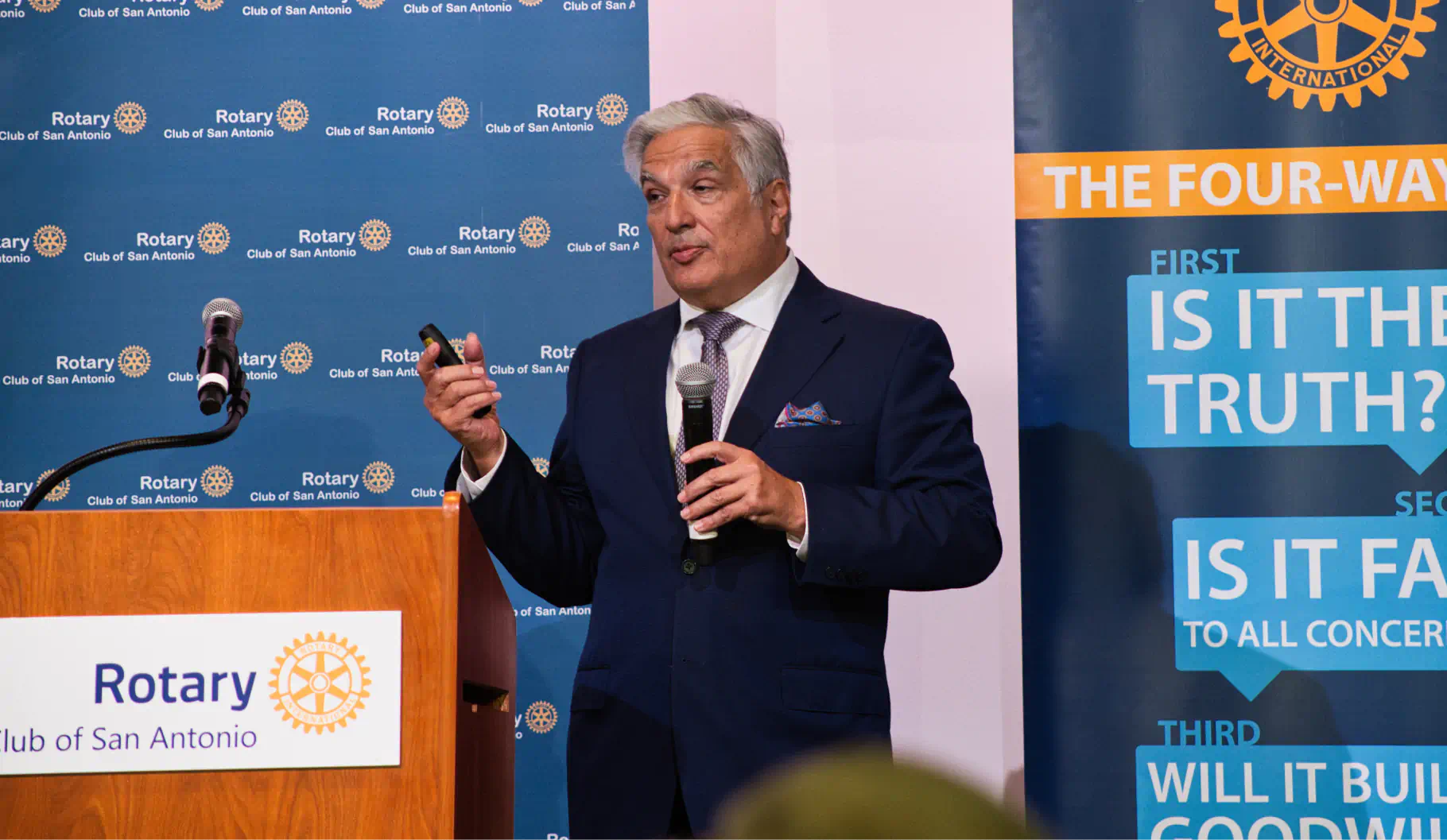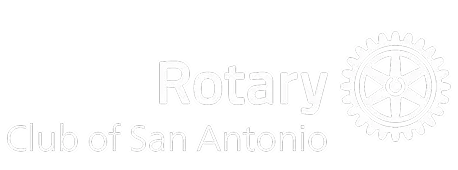
Dr. "Cisco" Cigarroa Frames the UTSA / UT Health San Antonio Merger as a Bold Leap Forward

At a well-attended Rotary Club of San Antonio luncheon on October 8, Dr. Francisco “Cisco” Cigarroa delivered a compelling presentation on the recent institutional merger between UT Health San Antonio and UTSA. His talk painted a clear picture of not only the logic behind the integration, but also the transformative potential it holds for higher education, healthcare, and economic development in San Antonio and the state of Texas.
A Personal Introduction, a Professional Mission
Dr. Cigarroa, a third-generation physician and seasoned academic leader, was introduced by Past President Pat Frost as the luncheon’s featured speaker. His remarks wove together personal stories with a grand vision for institutional synergy, growth, and regional uplift.
In his new leadership role, Cigarroa serves as Senior Executive Vice President for Health Affairs & Health System within the merged UT San Antonio structure.
Merger as Strategy: More Than an Administrative Move
Dr. Cigarroa emphasized that the merger is not simply structural realignment; it is a strategic repositioning to create a unified “comprehensive enterprise” integrating education, clinical care, and research.
A few of the key points he made:
- The newly merged institution carries the name UT San Antonio as of September 1, 2025, and now joins together two Carnegie R1 “very high research activity” institutions.
- The combined entity now ranks third in Texas for public research institutions by research expenditures, trailing only Texas A&M and UT Austin, with research outlays in the $486 million range and a staff of approximately 17,000.
- From day one, the merged institution spans 15 colleges and schools across six campuses, offering more than 320 degree programs in disciplines from engineering and arts to biomedical sciences, and bringing health and medicine more fully into the core academic mission.
- Through integration, the expectation is that synergies will yield exponential gain, not just additive strength. As Dr. Cigarroa put it: “A discovery that happens here… translates to the population at large and it’s going to have a global impact.”
- In particular, he pointed to new interdisciplinary initiatives—such as the dual MD–AI (artificial intelligence) degree program—as evidence that the merger enables innovations that neither institution could have accomplished alone.
Implications for San Antonio, Texas, and Beyond
To the assembled Rotarians, Dr. Cigarroa underscored how this merger contributes to a broader regional and state ambition:
- He forecast that the new economic impact of UT San Antonio will greatly exceed the sum of its parts, feeding into San Antonio’s $44 billion healthcare and biosciences economy.
- The merged institution is positioned to become a more potent magnet for research funding, talent recruitment, faculty investment, and partnerships—not just locally, but nationally and internationally.
- He suggested the “scale and depth” of the new university could elevate San Antonio’s reputation, accelerating its role as a global city of innovation, health, and education.
- Furthermore, by combining a top-tier academic institution with an academic health enterprise, UT San Antonio gains a structure similar to other leading public universities that embed medical and health sciences at their core.
Challenges and the Road Ahead
Dr. Cigarroa did not gloss over the hurdles:
- He acknowledged federal research funding cuts are a present constraint, and urged resilience in advocating for sustained investment.
- He discussed the importance of maintaining clinical and education mission alignment during the transition, ensuring that neither side’s identity becomes diluted.
- During the Q&A session, he addressed how the merged institution plans to engage in research on long COVID, mental health, dementia, and other urgent biomedical challenges—fields that require both deep clinical infrastructure and academic rigor.
- Accreditation and organizational alignment are ongoing processes: the merger was approved by the regional accreditor SACSCOC earlier in 2025.
Cigarroa conveyed confidence that the integration committees, task forces, and leadership structures are prepared to shepherd the merged institution through its formative years.
A Moment of Institutional Ambition
By the end of Dr. Cigarroa’s talk, it was clear he views this merger not as the end of two stories, but the beginning of a new one. His repeated framing of “one plus one equals ten” captured the aspirational tone: San Antonio is placing a bet that the whole will vastly outstrip its parts.
For the Rotary audience, his message resonated: the merger signals a turning point for the city’s higher education, healthcare, and innovation landscape. The real test now lies in execution—but if the early course is any indication, UT San Antonio may soon emerge as a key anchor institution for Texas’ future.



.svg)
.svg)
.svg)
